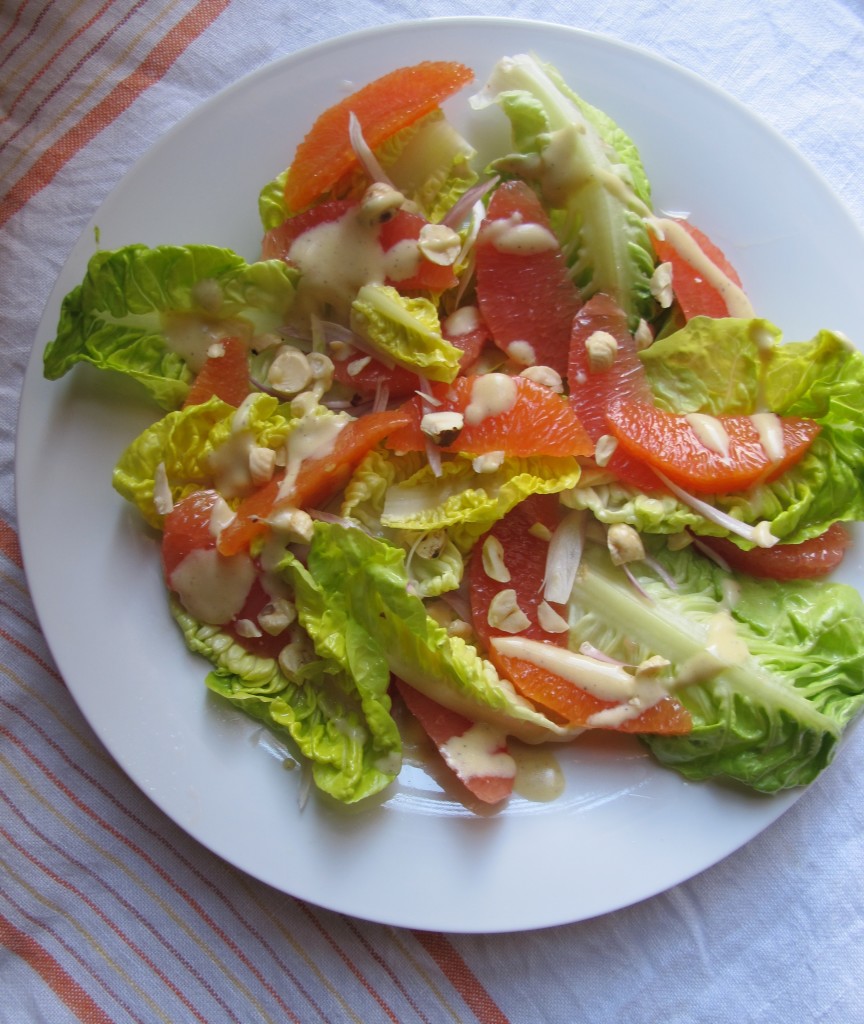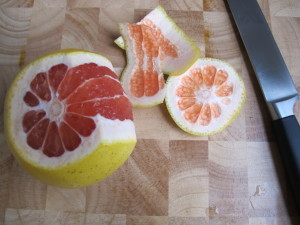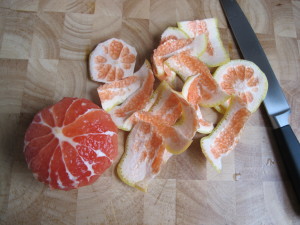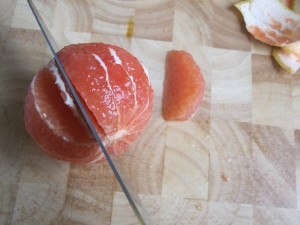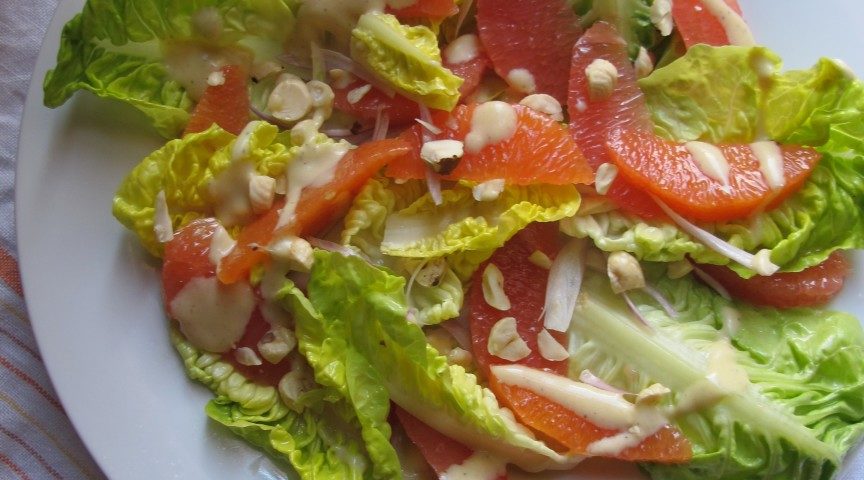
Sunshine in Winter Citrus Salad – From Contributing Food Editor, Christine Berardi
Another delectable dish from our Contributing Food Editor, Christine, with a bright citrus salad that is perfect for cheering up your winter blues!
Unless you live somewhere like California, enjoying a plant-based diet gets a lot more challenging this time of year. The piles of jewel tone tomatoes, eggplants, berries and stone fruit are long gone from the farmers market, and even the burnished golden tones of winter squash and pears are a fading memory. But then, as you’re walking through the market, looking glumly at the cabbage and rutabagas and potatoes, like a ray of glorious sunshine you see the citrus! Piles of oranges and grapefruits and lemons and limes in every sunny hue!
I’ve been making version of this salad for years, sometimes with butter lettuce or little gems, sometimes with endive for a little bitter crunch. I change the variety of fruit I use to suit my taste but I try to balance the sweeter oranges with a more acidic and slightly bittersweet variety to make the flavors more dimensional. The red fruits like red grapefruit, blood orange and cara cara are high in cancer-fighting lycopene and all of them are packed with vitamin C so you can’t go wrong.
Using cream in the vinaigrette feels a little more decadent than olive oil and anyone who has ever had a Creamsicle know how gorgeously citrus and cream work together, but olive or even avocado oil are lovely options too.
I know that segmenting oranges take a little practice, but take your time and use a nice sharp knife. It’s worth the extra effort not to have to fight with tough bits of membrane, but if it’s too daunting at first, don’t skip this salad; I’ve given you another option for cutting the fruit in the instructions. Supremed citrus is nice on salads, on a bowl of tangy vanilla yogurt, or with a scoop of buttermilk sorbet.
Sunshine in Winter Citrus Salad
1 ruby red grapefruit or oro blanco grapefruit
1 Cara Cara orange or navel orange
1 blood orange or Meyer lemon
1 head of butter lettuce or little gem lettuce per person, washed and dried.
1 shallot
¼ cup hazelnuts
1 teaspoon Dijon mustard
About 1/3 cup olive oil or heavy cream
½ teaspoon sea salt
In a dry pan over medium heat, toast the hazelnuts just until they become fragrant. Remove any stray bits of skin that loosen and coarsely chop the nuts.
Slice the shallot lengthwise into thin slivers and set aside.
Using a sharp knife, cut through the skin at the north and south poles of the citrus, cutting off all of the skin, pith, and just through the membrane.
Set the fruit on its flat base and begin cutting through the skin and membrane on the sides, following the curve of the fruit.Don’t worry if there is still some white left behind; this can be trimmed after the skin is gone.
Once the skin and membrane is gone, place the fruit on its side on a cutting board; there will be thin white lines running from end to end where the segments are divided by more membrane. Slicing all the way through to the core of the fruit, cut out eachsegment just on the inside of each of these lines, as if you are taking the pages out of a book, but leaving the covers. You will end up leaving some of the fruit behind, but don’t worry. You will be squeezing that to use for the salad dressing. This technique may take a little practice and a nice sharp knife but it is so nice to have nice little membrane-free segments in the salad!
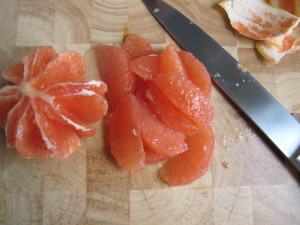 However, if segmenting the citrus proves to be frustrating at first, another way to make the salad is to peel the fruit as I described and instead of segmenting it, slice the fruit into wheels with the segments looking like spokes. This will be a little chewier and less delicate but still nice.
However, if segmenting the citrus proves to be frustrating at first, another way to make the salad is to peel the fruit as I described and instead of segmenting it, slice the fruit into wheels with the segments looking like spokes. This will be a little chewier and less delicate but still nice.
Once you have your citrus segments set aside, grab what is left of the pulp and membrane and squeeze it into a measuring cup, straining out any stray seeds that are left. Reserve about 1/3 cup- the rest is the cook’s treat. In a jar with a tight lid (I use an old olive jar) combine the citrus juice, Dijon mustard, and salt. Shake to mix the mustard with the juice, then add the olive oil or cream and shake until it forms a creamy smooth emulsion.
Separate the leaves of the lettuce and either place them in a large bowl or platter or divide them between plates. Tumble a mixture of your citrus segments and shallot slivers over the top. Drizzle with the vinaigrette and sprinkle the hazelnuts on top.
-CB


